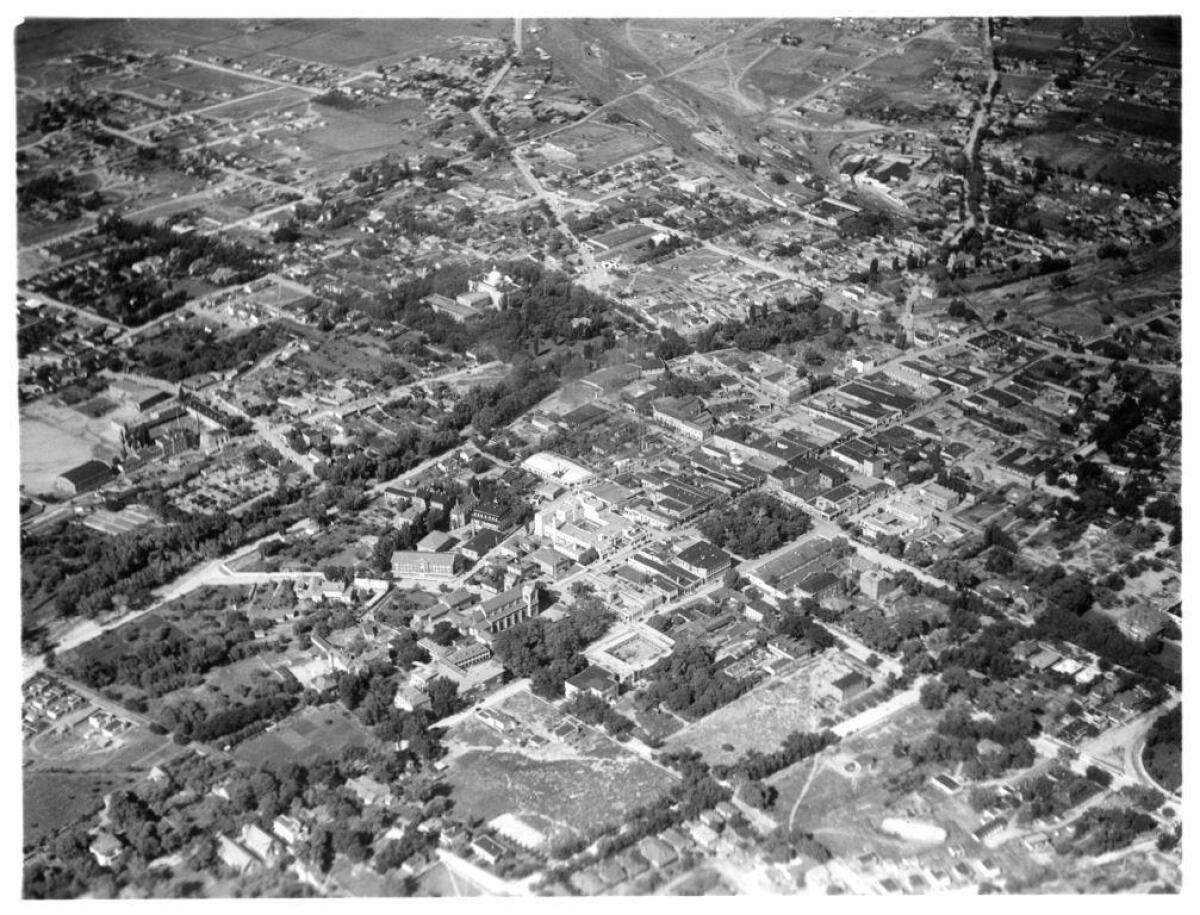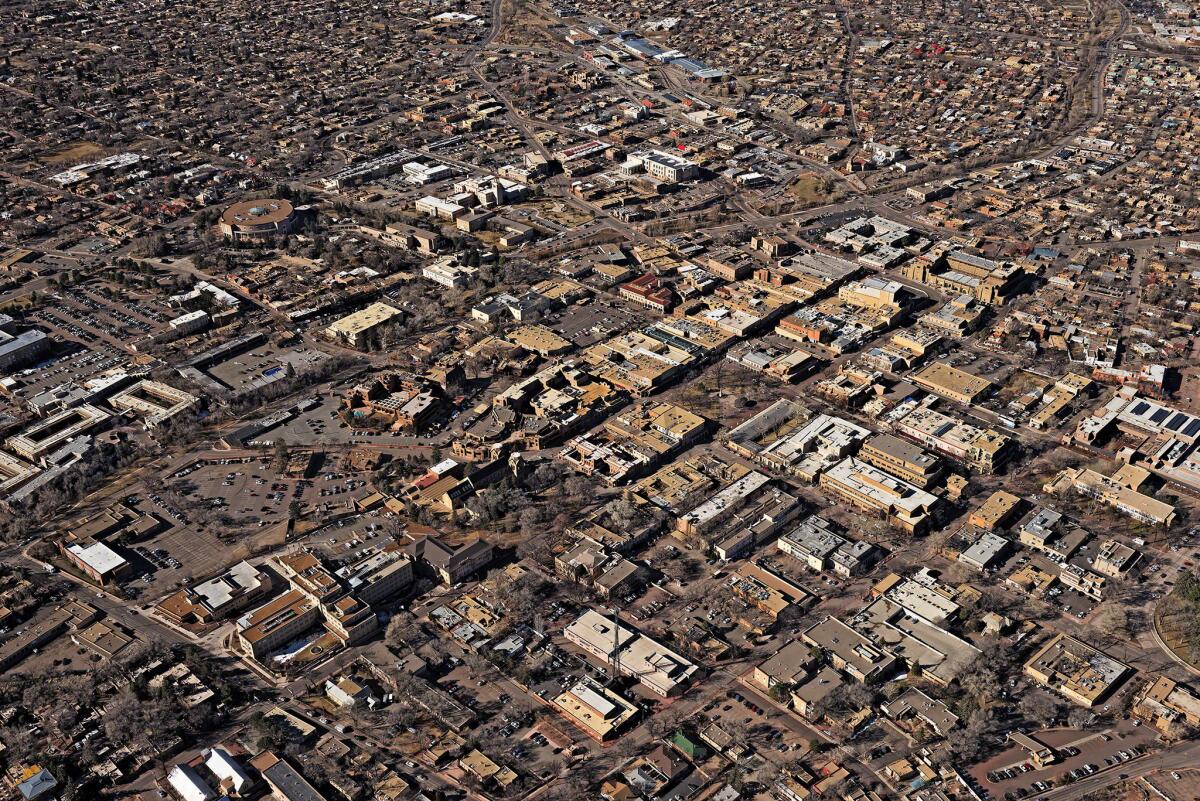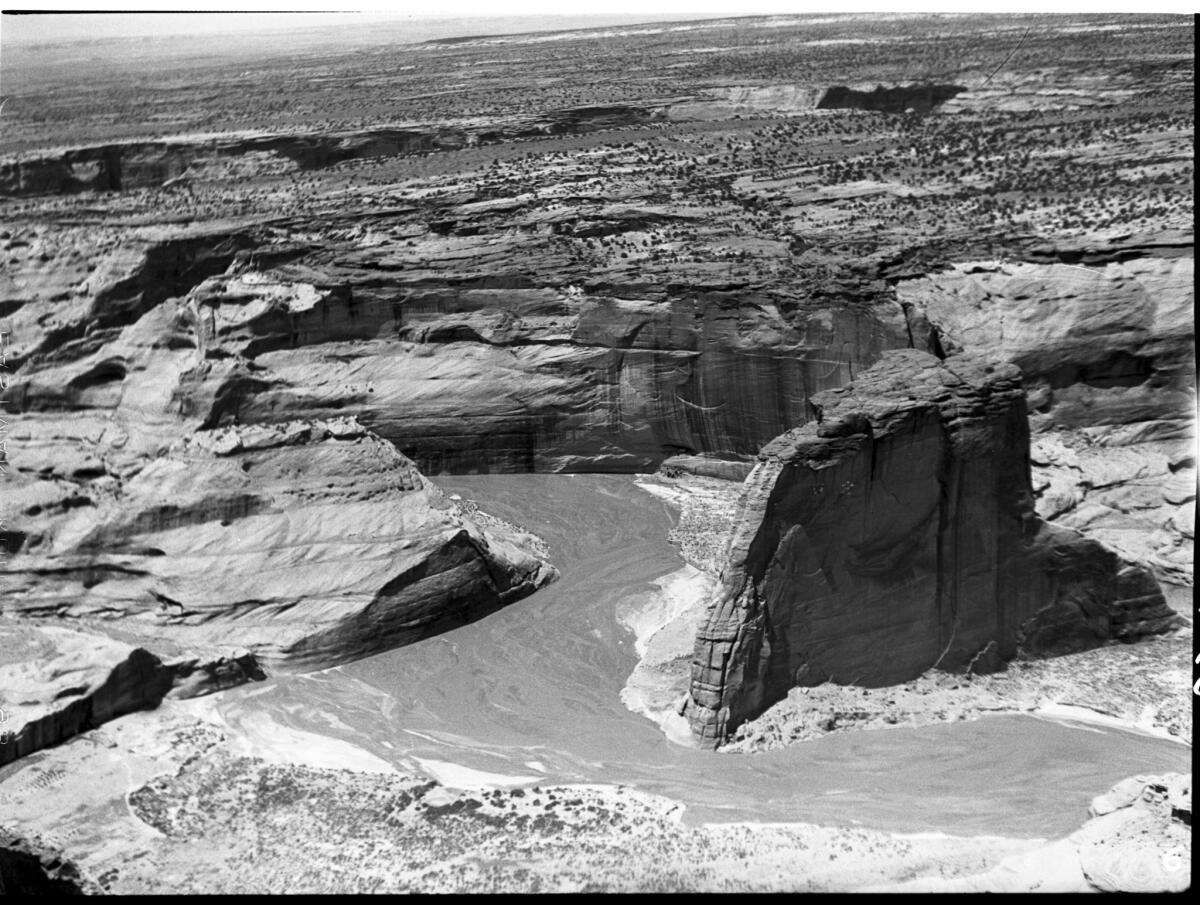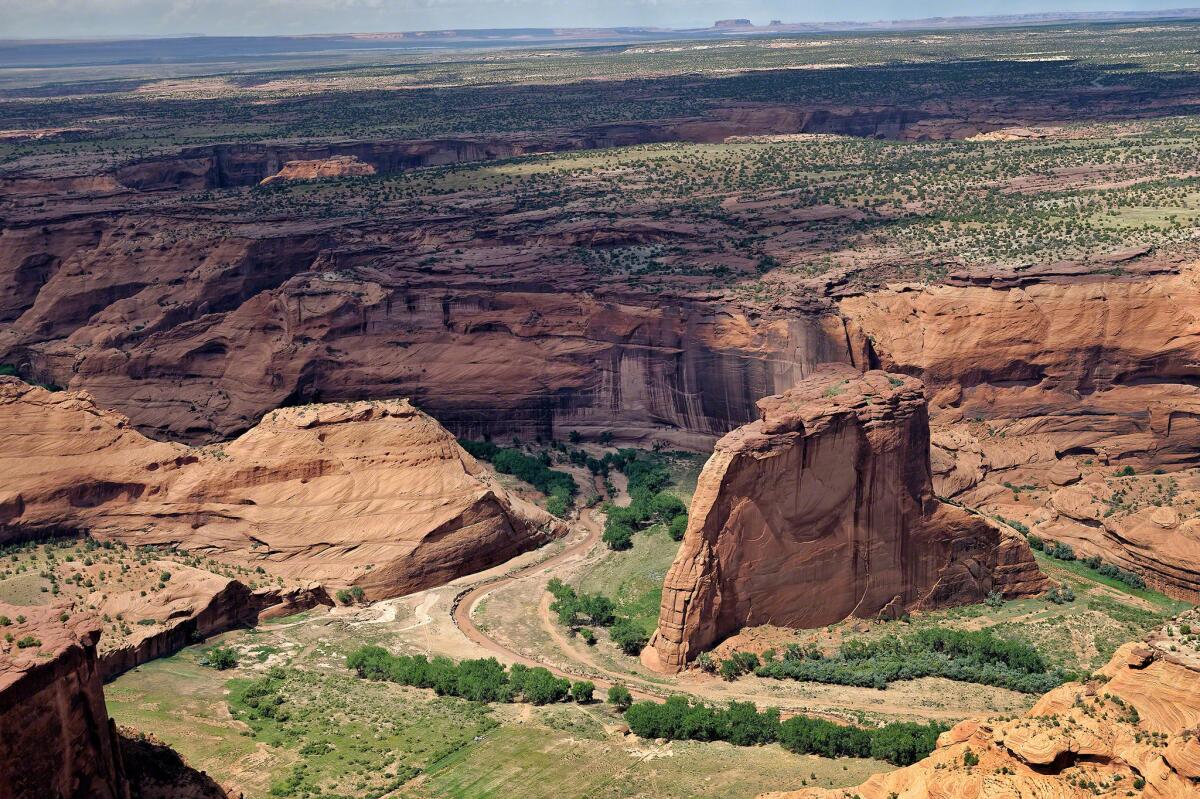The timeless, breathtaking beauty of the Southwest from above
- Share via
During his time in the sky, pioneer aviator Charles Lindbergh noticed that the world looked profoundly different from the cockpit of a plane. In 1929, he and his bride, Anne, flew over and photographed the Southwest's remarkable landscape and archeological sites from the air.
More than eight decades later, New Mexico pilot and photographer Adriel Heisey leaned out the door of the light craft he was flying to capture Lindbergh's images, looking for the same angles and the same time of day.
The result of both sets of aerial work will be displayed in a side-by-side show called "Oblique Views: Archeology, Photography and Time," which opens Oct. 25 at the Museum of Indian Arts and Culture in Santa Fe.
The project started with the idea of restoring and protecting the 198 deteriorating nitrite negatives shot by Lindbergh, which are owned by the museum. Then came the idea of re-creating what the aviator had seen decades before.

Santa Fe New Mexico, circa 1929
Aerial view of Santa Fe, circa 1929. (Charles A. and Anne Morrow Lindbergh / Museum of Indian Arts and Culture)

Modern-day Santa Fe. (Adriel Heisey)
"There are really big differences in Santa Fe," museum curator of archeology Maxine McBinn says. "What was farm fields is just a sea of houses. It's really amazing to me. Santa Fe is still not a huge place, but it's so much bigger now than it was then."
Aerial shots of Canyon de Chelly (now part of a national monument just over the border with Arizona) and Chaco Canyon (now a national historic park in northwestern New Mexico) tell a different story too.

White House Ruin is composed of two parts: a larger room block on the canyon floor that rose to four stories high in the back, and another set of rooms built in a rock shelter immediately above.
Chinle Creek and the White House ruins in Canyon de Chelly, circa 1929. (Charles A. and Anne Morrow Lindbergh / Museum of Indian Arts and Culture)

Oblique aerial view of Chinle Creek and the isolated red rock fin near White House Ruin in Canyon De Chelly. This view is to the northwest in afternoon light, with Round Rock and Little Round Rock on the horizon. This view is an attempt to rephotograph the 1929 Charles Lindbergh aerial photograph, negative number 130246.
The modern view of the White House ruins. (Adriel Heisey)
Images of the Anasazi structures known as the White House reveal a greener landscape nowadays because there are fewer animals grazing in the canyon.
Also, the National Park Service removed historic structures from places such as Canyon de Chelly and Chaco Canyon to showcase the ancient structures. So, McBinn says, old trading posts and buildings where archeologists slept have vanished.
"We think of the past, and these remote places and nobody being there," McBinn says. "There were more people there in 1929 than there are today."
Visitors to the show will see side-by-side photographs that create a time-lapse effect. Lindbergh shot his photographs with a 2-by-3 camera that used cumbersome glass plates; Heisey shot with a digital camera, checking his laptop while in the air to see how his photo compared with Lindbergh's.
The exhibition that opens in fall will remain on display through May 2017.
Info: Museum of Indian Arts and Culture
MORE:
A cast of robots run this Japanese hotel
Look, I'm on top of Mt. Fuji right now and using Instagram!
Greyhound starts bus service in Mexico, with connecting routes to Texas
Sign up for The Wild
We’ll help you find the best places to hike, bike and run, as well as the perfect silent spots for meditation and yoga.
You may occasionally receive promotional content from the Los Angeles Times.




